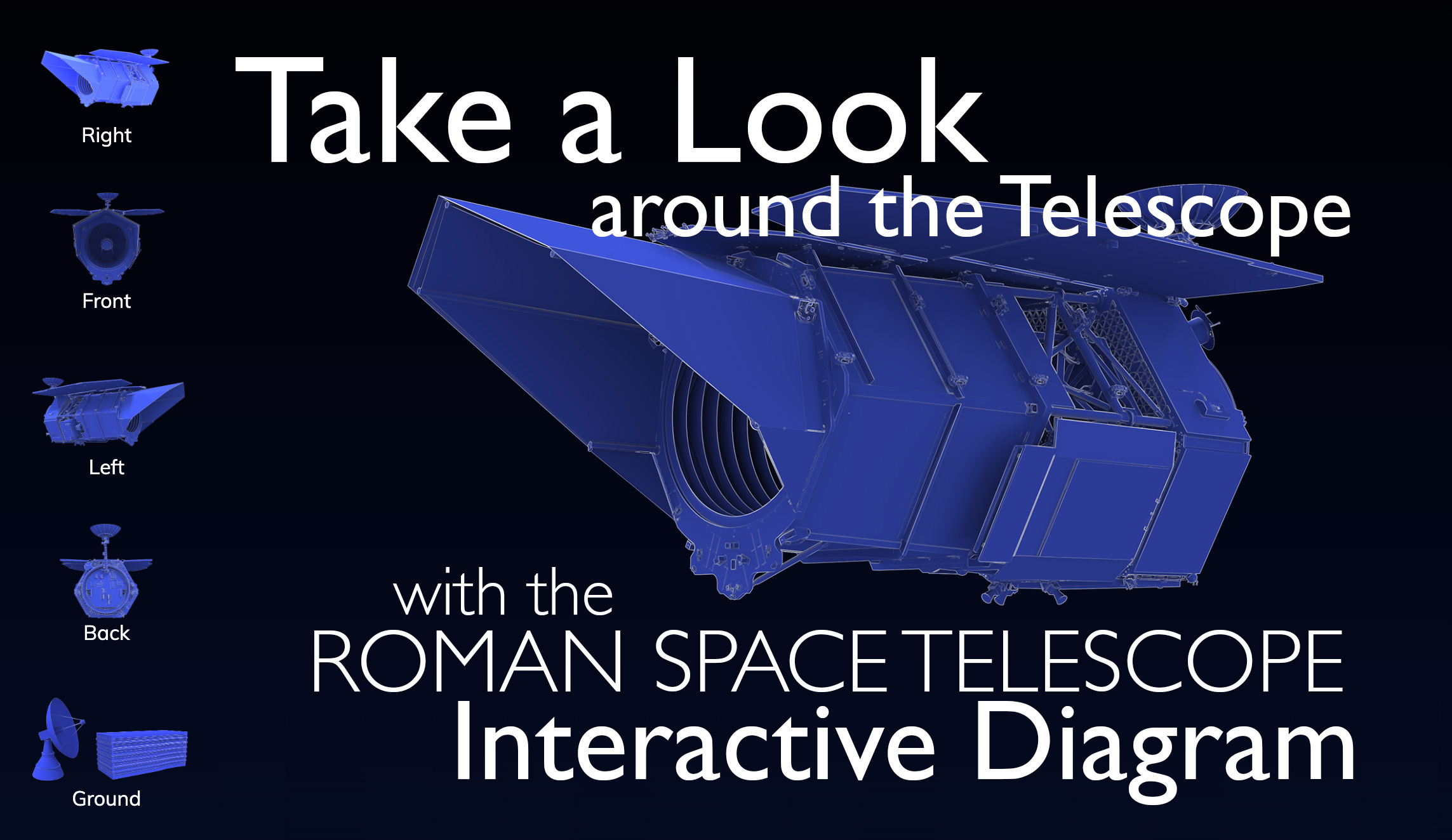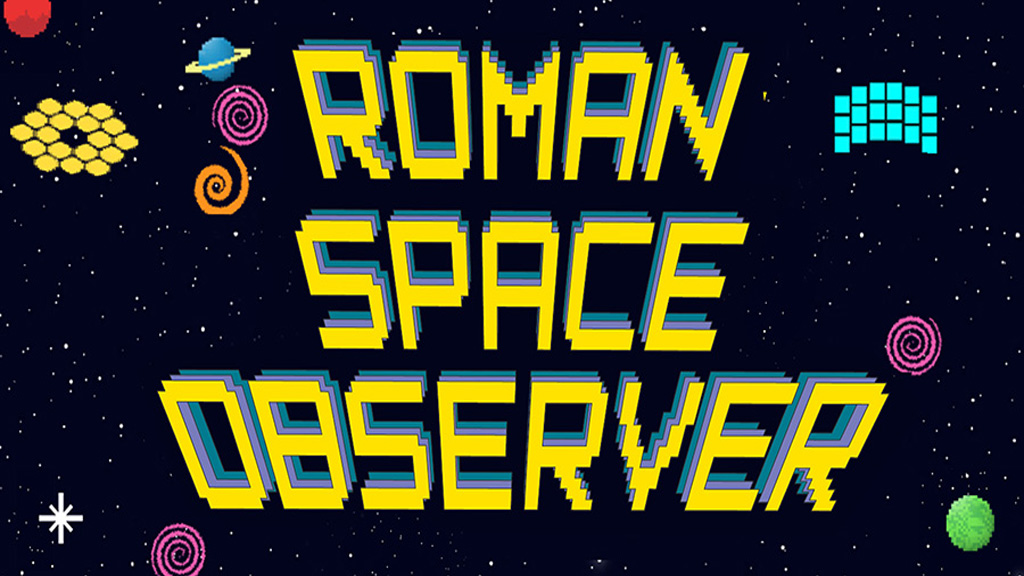Call for Self-Nominations for the Roman Core Community Survey Definition Committees
The primary goal of the Nancy Grace Roman Space Telescope is to maximize the scientific return from wide field near-infrared surveys. To this end, the Roman Space Telescope team is requesting self-nominations, due on August 14, 2023, for membership on the committees that will undertake the work of defining the observational strategies for Roman’s Core Community Surveys.
Roman's Wide Field Instrument (WFI) will have a large field of view (0.28 sq deg), Hubble-like sensitivity and resolution, and highly efficient survey operations, enabling survey speeds roughly 1000 times faster than achieved with Hubble. Roman's WFI observing program will include both Core Community Surveys and General Astrophysics Surveys (for which a minimum of 25% of Roman’s observing time will be reserved in the first five years), defined by a community-led process and traditional peer-reviewed calls for proposals. The first call for proposing General Astrophysics Surveys will be approximately one year before launch. The data from Roman’s Core Community Surveys will enable a host of general astrophysical investigations in addition to addressing the Roman Mission's science objectives related to cosmology and exoplanet demographics.
Roman’s Core Community Surveys will be defined by the astronomical community and will include a High Latitude Wide Area survey, a High Latitude Time Domain survey, and a Galactic Bulge Time Domain survey. The work of crafting an observational strategy for each survey that maximizes their overall science return, while meeting Roman Mission objectives in cosmology and exoplanet demographics, will be undertaken by the Core Community Survey definition committees (hereafter referred to as the “community survey committees”). These committees, one for each Core Community Survey, will each be composed of ~ 8 to 15 members of the astronomical community who represent both the breadth of science the community wants to see enabled with each Core Community Survey, and the diversity of the astronomers who will ultimately use Roman’s datasets. The community survey committees are expected to be active for approximately 2.5 to 3 years, with the bulk of the effort occurring in the first ~18 months.
This call for self-nominations is the first step in forming Roman’s community survey committees. The full committee membership will be drawn from various sources, including but not limited to self-nominations.
What will membership on a community survey committee entail?
The community survey committees will be charged with understanding and representing the full breadth of the astronomy community’s interests in Roman’s Core Community Surveys. This will require evaluating initial community input, including the recent Core Community Survey science pitches and white papers, and soliciting additional, more targeted community input through a variety of channels. The community survey committees will craft potential survey implementations and evaluate them against science metrics, optimizing the observational strategy in order to maximize the science return from the survey while meeting Roman’s science requirements on cosmology or exoplanet demographics.
Each of Roman’s community survey committees will provide a recommendation for the survey implementation, with options for enhancements and descopes, for consideration by a Roman Observations Time Allocation Committee (to be formed at a later date). The Roman Observations Time Allocation Committee will review the recommendations from each of the community survey committees and provide a recommendation to the Roman Project on the balance between each of the core community surveys as well as the total allocation of time that should be devoted to Roman’s Core Community Surveys. The Roman Project will then determine the final core community survey program, after which the community survey committees will produce documentation that will describe the survey strategy in sufficient detail to enable Roman’s science centers to implement the surveys, and enable the astronomical community to understand the survey implementation at the level of detail necessary to propose for funding to analyze the data, and to determine if any additional observations will be needed to enable a given science investigation.
Accordingly, the tasks of the community survey committees can be expected to include:
- Becoming familiar with Roman’s science requirements and the Wide Field Instrument and observatory capabilities
- Reviewing existing community, former science team, and working group input
- Discussion, consolidation, and prioritization of the science drivers for survey definition, including identification of the most promising synergies with the cosmology- or exoplanet demographics-based science requirements
- Determining where additional work is needed (e.g., to define appropriate metrics for a science driver or determine if a science investigation is feasible within operational constraints) and undertaking the effort needed to resolve these open issues, either through direct investigation by committee members or through enlisting community experts
- Identifying areas where community consensus-building is needed (e.g., where there are significant discrepancies in strategy for similar science investigations), and undertaking the effort to build that consensus
- Exploring the impact on the overall science return of various trades in observational strategy, including via quantitative trade-off analyses for various survey options against the science drivers
- Interacting with and soliciting additional input from the broader astronomical community to ensure the needs of the community are met and to leverage community expertise
- Working with the Roman Project and Science Centers to ensure the survey implementation options being considered are feasible within scheduling and other operational constraints
- Crafting nominal, enhanced, and minimal survey implementations for consideration by the Roman Observations Time Allocation Committee, and writing up recommendations which include a summary of the science drivers used to define the survey, a description of the survey strategies, and the level to which the science drivers will be addressed by each survey option
After the determination of the final core community survey program, based on the recommendations of the Roman Observations Time Allocation Committee to the Roman Project, the tasks of the community survey committees will include:
- Working with Roman’s Science Centers to write detailed implementation instructions for the chosen survey strategy
- Writing a report for the astronomical community detailing the survey implementation and describing its capabilities for the various science drivers used in defining the survey
- Support and review of the pre-launch implementation of the surveys by Roman’s Science Centers
What support can the community survey committees expect?
The Roman Project and Science Centers will provide significant support of the work of the community survey committees. This will include:
- Support in determining operational and scheduling feasibility of observational strategies under consideration, and estimating the total time required for different observational strategies, including overheads
- Support in using Science Center tools (e.g., exposure time calculator, image simulators) to quantitatively evaluate observational strategies under consideration
- Logistical support for committee meetings and communication
- Facilitation and logistical support of interactions with, and formal requests for input from, the astronomical community (e.g., workshops and white paper calls)
- Travel support for in-person meetings and workshops
In addition, the committees will be encouraged and expected to engage with experts in the broader community, and can anticipate support from funded science teams in evaluating the science impact of various trades in observational strategy.
How to self-nominate
The deadline for self-nominations is August 14, 2023. Self-nominations should consist of a short-form CV (approximately one to two pages) and a cover letter and should:
- State the community survey committee in which you are interested in and explain your motivation for serving
- Detail the contributions you plan to make to the committee and provide an estimate of the level of effort you could devote to the work of the committee.
- Highlight your scientific, technical, or community-building experience relevant to the work of defining the survey, as described above.
Please send self-nominations as a PDF attachment to roman-surveys@lists.nasa.gov.
For specific questions related to a submission, please email roman-help@bigbang.gsfc.nasa.gov with the subject line: “Roman community survey committee self-nomination.” This will send your question simultaneously to the help desks of both Roman Science Centers (help@stsci.edu and roman-help@ipac.caltech.edu).
Resources
Frequently asked questions
Over what timeline will the community survey committees be active?
The Core Community Survey definition committees will be formed by late summer, 2023. The bulk of the work will occur over the ensuing ~18 months, with survey recommendations due to the Roman Observatory Time Allocation Committee anticipated to be due in late 2024, and implementation instructions due to the science centers, and final survey report due to the astronomy community, in ~ March 2025. This timeline is based on planning for a late 2026 launch. It will provide the astronomical community with the time needed to understand the capabilities of the surveys in advance of the first Call for Proposals (approximately one year before launch), and the Science Centers with the time needed to implement and schedule the surveys. The committees are anticipated to be active for approximately 2.5 to 3 years in total. The remainder of the committees’ activities, after delivery of their final reports, will consist of support and review of the pre-launch survey implementations by the Science Centers.
Who are we looking for?
The Roman Core Community Survey definition committees should reflect the breadth of science enabled by Roman’s community surveys, as well as the diversity of the astronomical community who will utilize Roman’s data (including across career stage, institution, position type, and demographic groups). If you have relevant expertise for helping to define a Roman Core Community Survey and the capacity to serve on the committee, please consider self-nominating.
What is the expected time commitment?
There will be significant work involved in defining Roman’s Core Community Surveys over the timeline imposed. Committee members should anticipate attending regular meetings (primarily, but not exclusively, virtual), supporting one or more community workshops, and performing some work outside of meetings. However, the nature of that work, and the time invested, could vary significantly by individual. There is no minimum time commitment requirement for self-nominations. Therefore, if you have relevant expertise, we encourage you to consider self-nomination regardless of the amount of time you can commit.











